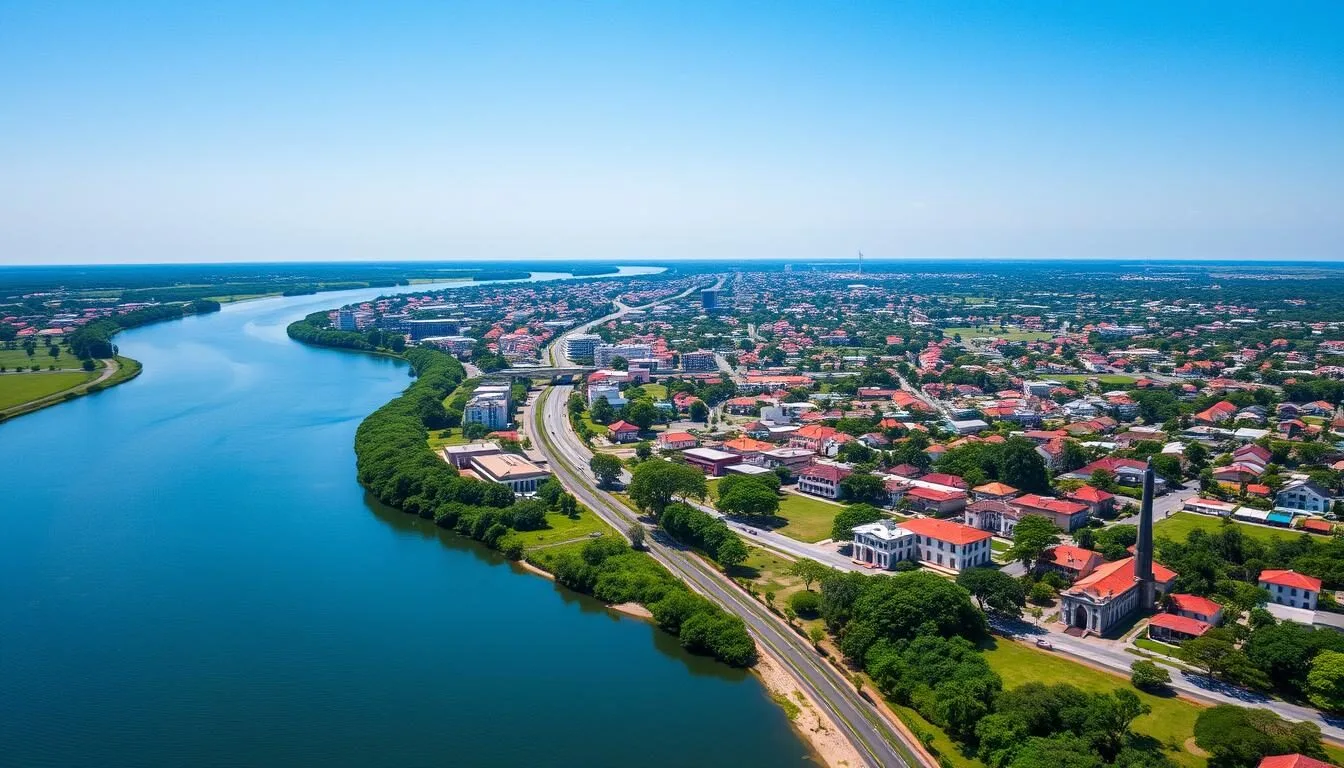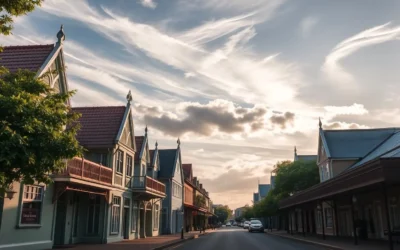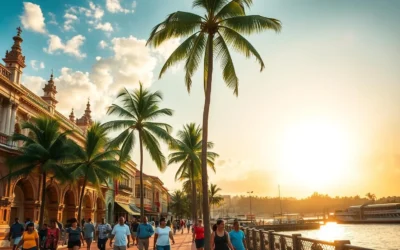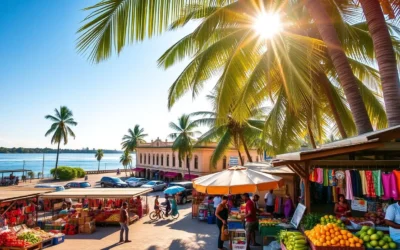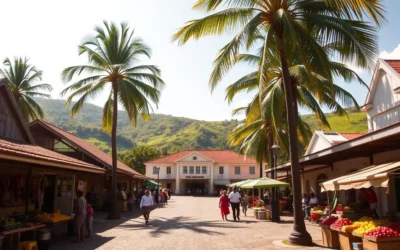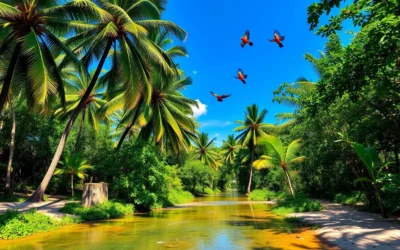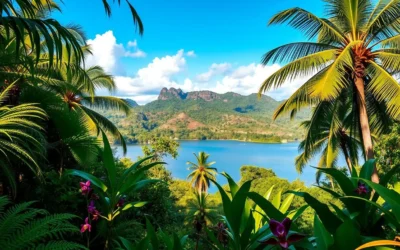✓ Accommodations✓ Flights✓ Rental Cars✓ Tours & Activities ✓ Tours & Activities
Getting to Suriname
The picturesque capital city of Paramaribo as seen from above
Reaching Suriname requires some planning as there are no direct flights from most countries. Most international travelers arrive via Amsterdam, Netherlands, or connecting flights through Caribbean hubs like Aruba or Curaçao. Johan Adolf Pengel International Airport (also known as Paramaribo-Zanderij International Airport) is located about 45 kilometers south of Paramaribo.
Entry requirements include a valid passport with at least six months validity, a return ticket, and for many nationalities, a tourist card or visa. Tourist cards can be obtained upon arrival for stays up to 90 days for citizens of many Western countries.
Best Time to Visit Suriname
Suriname has a tropical climate with high temperatures year-round, averaging between 29-34°C (84-93°F). The country experiences two dry seasons and two rainy seasons:
| Season | Months | Weather Conditions | Recommendation |
| Long Dry Season | August to November | Hot with minimal rainfall | Ideal for all activities |
| Short Rainy Season | December to January | Intermittent showers | Good for city exploration |
| Short Dry Season | February to April | Warm with occasional rain | Good for most activities |
| Long Rainy Season | May to July | Heavy rainfall, high humidity | Avoid if possible |
The best time to visit Suriname is during the long dry season from mid-August to mid-November. During these months, you’ll enjoy higher temperatures but avoid the heavy rains that can make travel difficult, especially to interior regions. The short dry season (February to April) is also a good option.
May and June are the rainiest months, with daily downpours that can limit outdoor activities and make some areas inaccessible. Unlike Caribbean islands further north, Suriname is outside the hurricane belt.
Top Attractions in Suriname
1. Historic Paramaribo
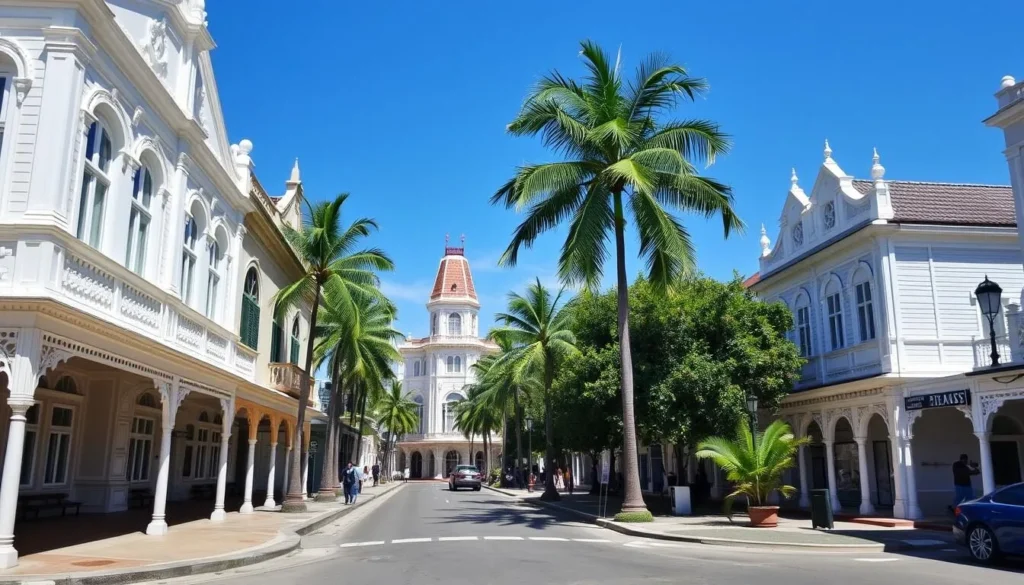
UNESCO World Heritage Site: Historic Inner City of Paramaribo
Paramaribo, Suriname’s capital, is a vibrant city where Dutch colonial architecture meets Caribbean flair. The historic inner city, a UNESCO World Heritage site, features stunning black and white wooden buildings dating back to the 18th and 19th centuries. Don’t miss Independence Square (Onafhankelijkheidsplein), lined with important buildings including the Presidential Palace and the Ministry of Finance.
2. Saint Peter and Paul Cathedral

The impressive wooden interior of Saint Peter and Paul Cathedral
This Roman Catholic cathedral is the largest wooden structure in South America and one of Paramaribo’s most impressive sights. Built between 1883 and 1885, the cathedral features a stunning interior made entirely of cedar wood. The structure was designated a minor basilica by Pope Francis in 2014. Guided tours are available to appreciate the intricate craftsmanship of this architectural marvel.
3. Commewijne River Plantations
The Commewijne River area offers a glimpse into Suriname’s colonial past through its historic plantations. Once thriving centers of coffee, cocoa, and sugar production, these estates now serve as cultural landmarks. Rent a bicycle to explore the well-maintained roads around the plantations or take a popular water taxi from Paramaribo.
Frederiksdorp, a beautifully restored plantation converted into a hotel and restaurant, makes an excellent lunch stop. Don’t miss Fort Nieuw Amsterdam, which houses artifacts from the slave trade era and features Dutch engineering works designed to control the river.
4. Central Suriname Nature Reserve
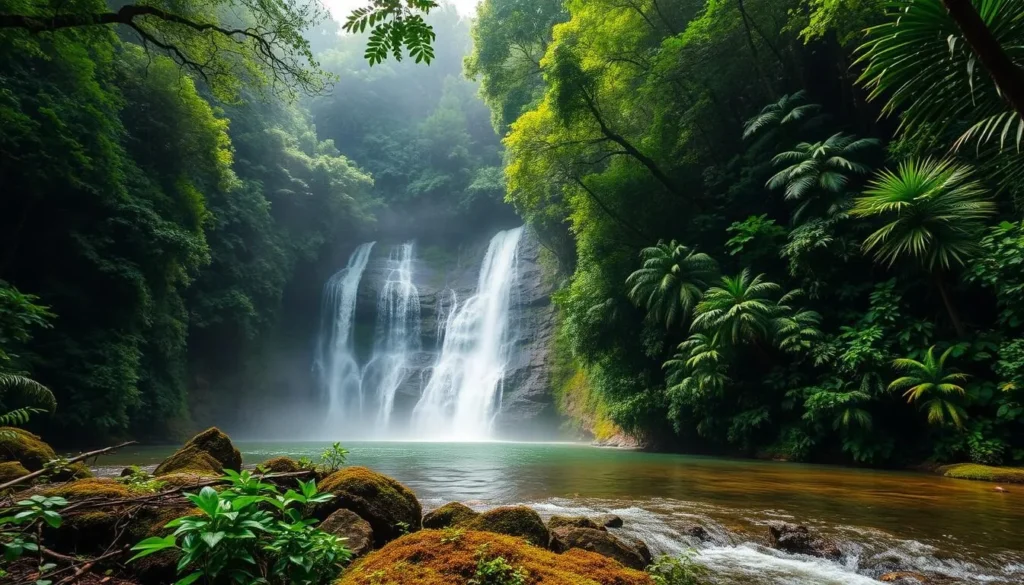
Pristine rainforest and waterfalls in the Central Suriname Nature Reserve
Covering an impressive 16,000 square kilometers (6,178 square miles), this UNESCO World Heritage site represents 12% of Suriname’s territory. The reserve protects one of the largest unspoiled tropical rainforests in the world, with remarkable biodiversity including rare and endemic species.
The most visited area is Raleighvallen (Raleigh Falls), a spectacular series of cascades on the Coppename River. Wildlife enthusiasts can spot spider monkeys, electric eels, and the vibrant Guianan cock-of-the-rock, a striking orange and red bird. Due to the challenging terrain, visiting with a local guide is essential.
Experience Suriname’s Natural Wonders
Book guided tours and activities to explore Suriname’s incredible landscapes
Browse Activities
5. Brownsberg Nature Park
Located about 130 kilometers south of Paramaribo, Brownsberg Nature Park sits atop a 500-meter hill offering breathtaking views of the surrounding rainforest and the vast Brokopondo Reservoir. The park features several hiking trails leading to beautiful waterfalls and creeks.
Brownsberg is a paradise for wildlife enthusiasts, with over 350 bird species and numerous mammals including eight different monkey species. Overnight accommodations are available, allowing visitors to experience the forest’s nocturnal sounds and early morning wildlife activity.
6. Jodensavanne (Jewish Savannah)
This historical site south of Paramaribo was once a thriving agricultural community established by Sephardic Jews who fled persecution in Spain and Portugal in the 17th century. Here, you can explore the ruins of the first synagogue built in the Western Hemisphere and wander through ancient Jewish cemeteries with beautifully ornamented tombstones imported from Europe.
The community primarily cultivated sugarcane using enslaved labor before eventually relocating to Paramaribo. Today, Jodensavanne stands as a powerful testament to Suriname’s diverse cultural heritage and complex colonial history.
More Must-See Attractions
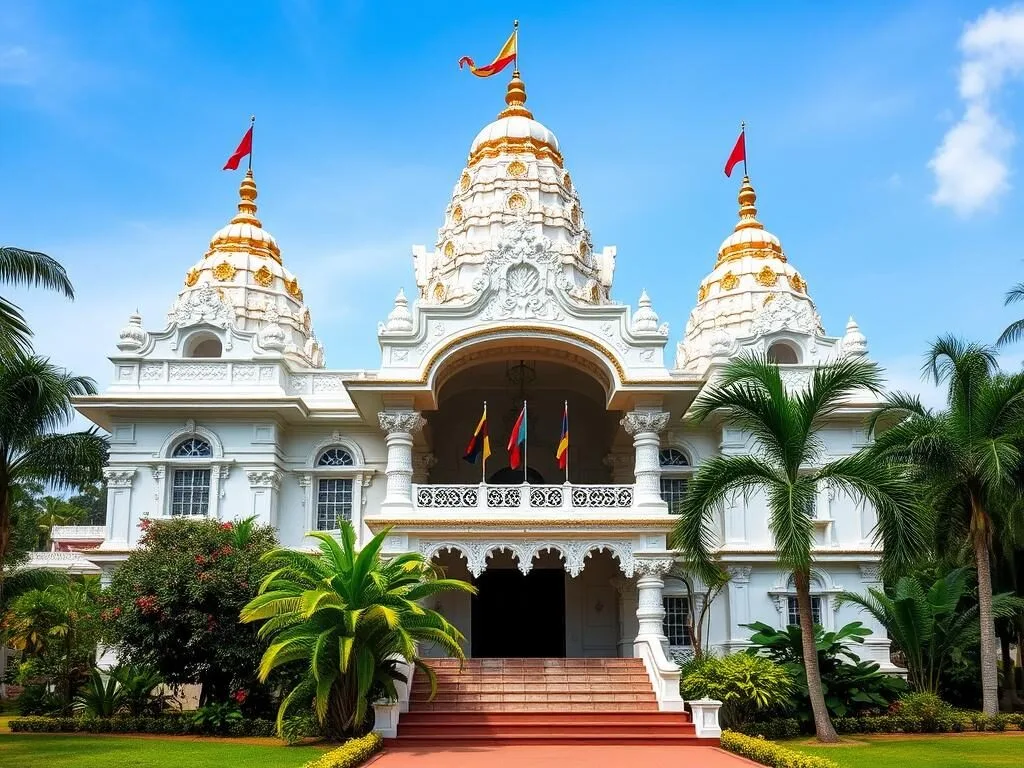
Arya Dewaker Hindu Temple
The largest Hindu temple in Suriname, this beautiful octagonal structure serves the country’s significant Hindu community. The temple complex includes a school and orphanage, and its design thoughtfully combines Dutch architectural elements with traditional Moghul and Moorish influences.

Neotropical Butterfly Park
Located in Lelydorp, this unique attraction showcases Suriname’s incredible butterfly diversity. The park features a butterfly breeding area, botanical gardens growing plants that sustain different butterfly species, and an interesting museum displaying indigenous insects and reptiles.
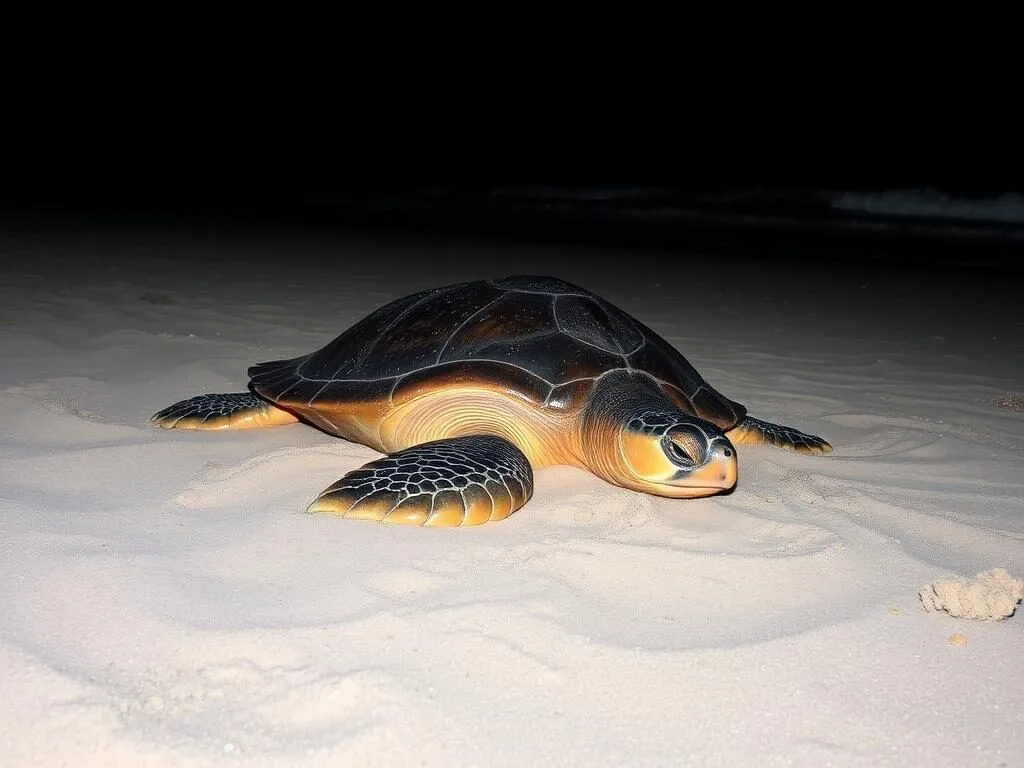
Galibi Nature Reserve
Established in 1969 at the mouth of the Coppename River, this coastal reserve is famous for its sea turtle nesting sites. Between April and August, visitors can witness giant leatherback, green, and olive ridley turtles coming ashore to lay their eggs—a truly unforgettable wildlife experience.
Practical Information
Getting Around
Transportation in Suriname varies depending on your destination:
- In Paramaribo, taxis are readily available but negotiate the fare before departure
- Public minibuses connect major points within the city and are very affordable
- For trips to interior regions, small aircraft are the most efficient option
- River travel by boat is common for accessing communities along the major waterways
- Rental cars are available in Paramaribo but driving conditions can be challenging
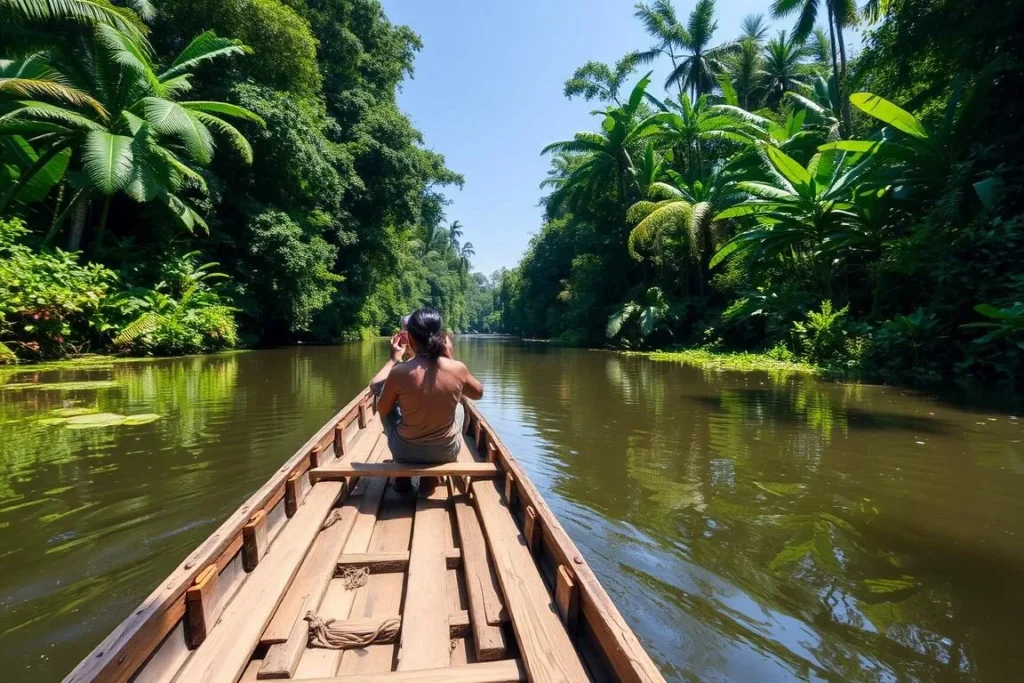
River transportation is essential for reaching many interior locations
Where to Stay
Suriname offers accommodations to suit various budgets and preferences:
Paramaribo
The capital offers the widest range of options, from luxury hotels like Royal Torarica to mid-range guesthouses and budget hostels. Many are within walking distance of historic sites and restaurants.
Coastal Areas
Resorts and lodges near beaches and nature reserves provide comfortable bases for wildlife viewing. Frederiksdorp Plantation offers a unique historical experience in restored colonial buildings.
Interior Jungle
Eco-lodges and basic accommodations in indigenous villages offer authentic experiences. Facilities are simple but provide unforgettable immersion in rainforest environments.
Find Your Perfect Stay in Suriname
Browse accommodations from luxury hotels to authentic eco-lodges
Local Cuisine
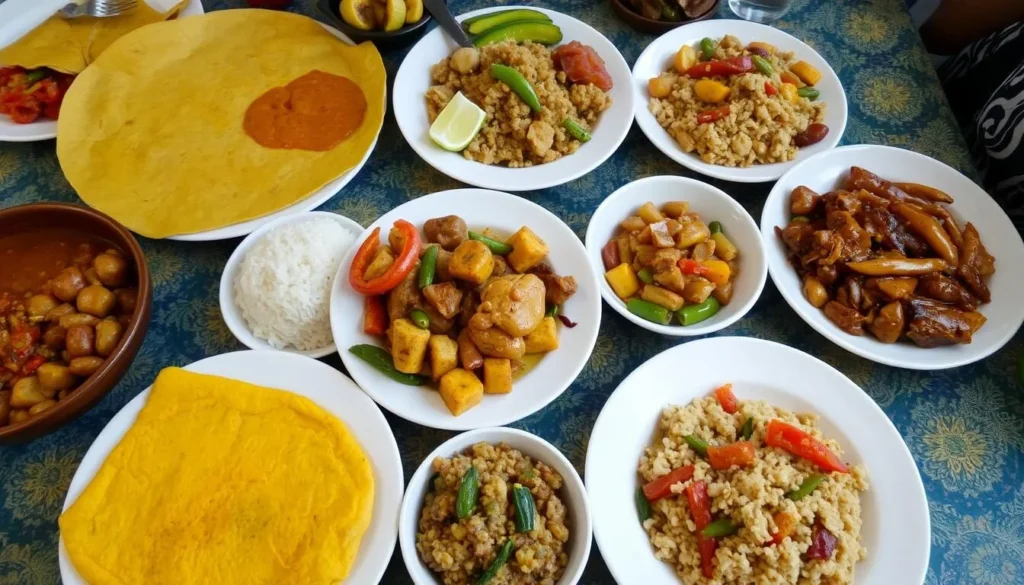
Surinamese cuisine reflects the country’s diverse cultural influences
Surinamese cuisine is a delicious reflection of the country’s multicultural heritage, combining elements from Indigenous, African, Dutch, Indonesian, Indian, Chinese, and Caribbean cooking traditions.
- Pom – A popular casserole made with tayer (a root vegetable) and chicken
- Roti – Flatbread served with curried potatoes, chickpeas, and meat
- Moksi Alesi – A one-pot rice dish with meat, vegetables, and spices
- Bakabana – Fried plantains served with peanut sauce
- Pinda Soup – Rich peanut soup often made with chicken or beef
Don’t miss trying local tropical fruits like soursop, star apple, and passion fruit, or refreshing yourself with a cold Parbo beer, the national brew.
Essential Travel Tips
Currency and Payments
The official currency is the Surinamese Dollar (SRD). While credit cards are accepted at major hotels and restaurants in Paramaribo, cash is essential for smaller establishments and travel outside the capital. ATMs are available in Paramaribo but less common elsewhere.
Language
Dutch is the official language, but Sranan Tongo (a local creole language) is widely spoken. English is understood in tourist areas, and you might also hear Hindi, Javanese, and various indigenous languages depending on the region.
Health and Safety
Consult your doctor about vaccinations before travel. Yellow fever vaccination is recommended, and malaria prevention may be necessary for visits to interior regions. Drink bottled water and use insect repellent, particularly in forested areas.
Communication
Mobile coverage is good in Paramaribo and coastal areas but limited in the interior. Local SIM cards are available for purchase with identification. Many accommodations offer Wi-Fi, though connection speeds vary.
“Suriname is a microcosm of South America, offering pristine rainforests, diverse wildlife, and a cultural melting pot in one compact, welcoming country.”
Sample 7-Day Itinerary
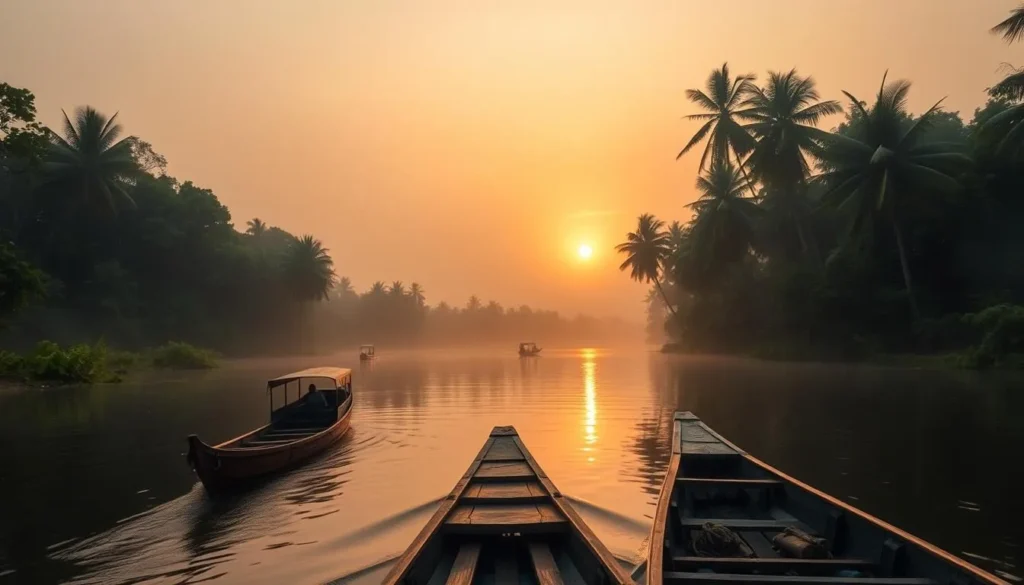
The scenic Suriname River is central to many travel itineraries
- Day 1: Arrive in Paramaribo, check into hotel, and take an evening stroll around Independence Square
- Day 2: Explore historic Paramaribo, visiting Saint Peter and Paul Cathedral, Fort Zeelandia, and the Presidential Palace
- Day 3: Take a day trip to the Commewijne River plantations, including Fort Nieuw Amsterdam
- Day 4: Fly to Brownsberg Nature Park for hiking and wildlife viewing, overnight in park lodging
- Day 5: Return to Paramaribo, visit the Suriname Museum and Central Market
- Day 6: Day trip to Jodensavanne to explore the historic Jewish settlement
- Day 7: Final shopping for souvenirs, departure
This itinerary balances city exploration with nature experiences. For turtle watching at Galibi Nature Reserve, plan your visit between April and August during nesting season. For deeper jungle exploration, consider adding 3-4 days to visit the Central Suriname Nature Reserve.
Why Suriname Should Be Your Next Destination
Suriname offers a rare combination of pristine nature, fascinating history, and cultural diversity that few destinations can match. From the UNESCO-listed architecture of Paramaribo to the untouched rainforests teeming with wildlife, this small South American nation delivers big experiences for adventurous travelers.
What makes Suriname truly special is its authenticity—tourism here remains refreshingly underdeveloped, allowing for genuine cultural exchanges and unspoiled natural encounters. Whether you’re paddling through jungle waterways, sampling the country’s incredible fusion cuisine, or simply chatting with locals from its many ethnic communities, Suriname promises memories that will last a lifetime.
Start Planning Your Suriname Adventure Today
Discover the best of South America’s hidden gem
Browse Activities
The above is subject to change.
Check back often to TRAVEL.COM for the latest travel tips and deals.
